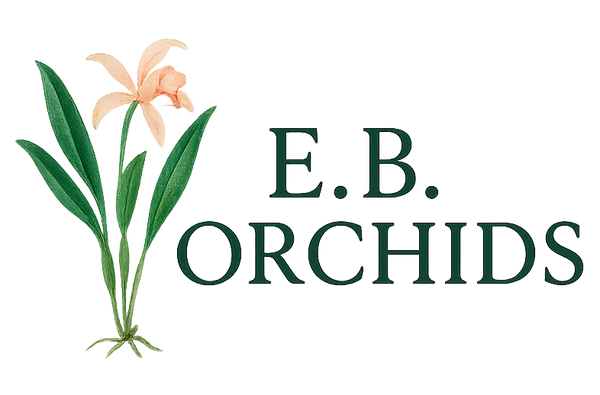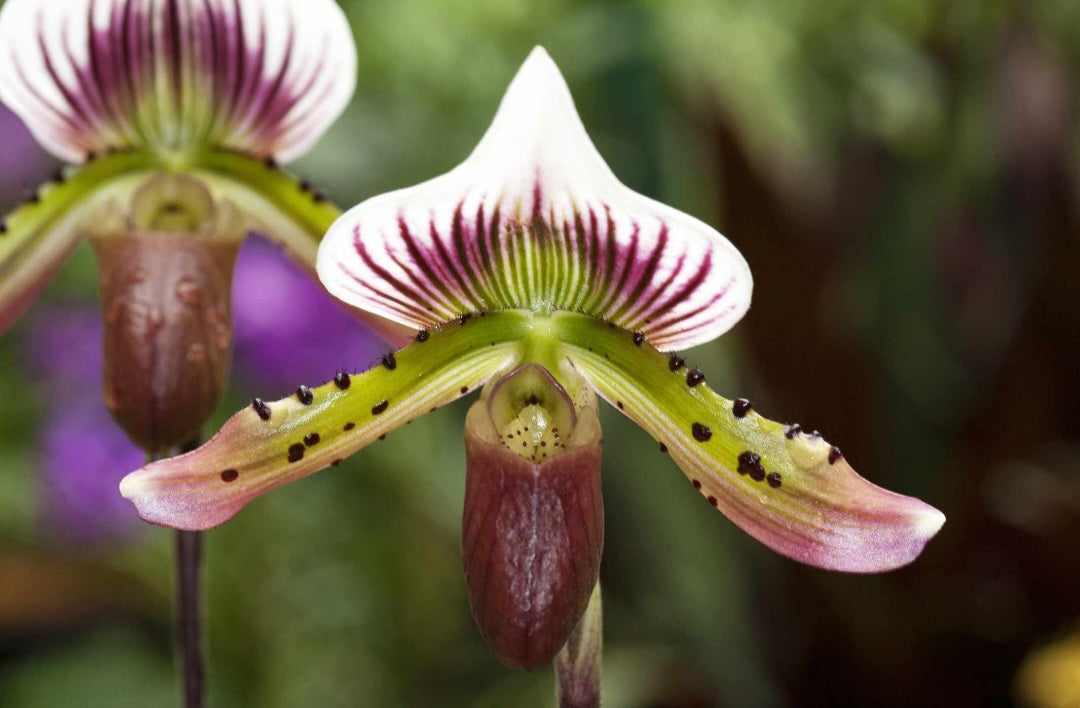Pa-fee-oh-PED-eh-lum
-
Light
In general, paphiopedilum (also widely known as Lady-Slipper orchids), prefer bright shade (~1500 foot-candles), similar to the light needs of phalaenopsis. Some species will do well in brighter light.
In the home, grow in an East or West-facing window so plants receive morning light. If growing in a South window, use a sheer curtain.
-
Temperature
The Paphiopedilum genera includes both warm and cool growing species. Generally, plants with mottled foliage and strap-leaves are warm growing and will do best in intermediate-warm temps - daytime between 70-80F and nighttime between 55-65F.
Cool-growing species will prefer daytime temps between 65-75F and nighttime temps between 55-62F. Cooler growing plants will tolerate warm summer temps as long as they are well watered, shaded, and in adequate humidity.
-
Water
Paphiopedilum are semi-terrestrial - they typically grow in the moist leaf-litter on top of the ground in wet forests and always have moisture or humid air near the roots. During warm weather, they will require frequent watering. The media should dry lightly between watering but never go completely dry. Using distilled or RO water is best practice for paphiopedilum. Reduce watering in cooler months/winter time.
Overwatering can lead to root rot. When not receiving enough water, the leaves will yellow at the tips and leaves that are closest to the base will drop. Never leave water in the crown or on the plant itself, aim to only water the media to avoid fungal issues and crown rot.
Never use ice to water orchids!
-
Humidity
Paphiopedilum will thrive under high humidity, with levels up to 70-80%. Inside the home, use a humidifier near the growing area to increase relative humidity. With increased humidity, increase airflow.
-
Fertilizing
Paphiopedilum will benefit from regular fertilizing, especially formulas with calcium and magnesium. Give a balanced fertilizer (10-10-10) at 1/4 the strength on the label weekly during summer months, reducing to about once a month in the winter time - look for a fertilizer that includes Ca. If your fertilizer does not include Mg, you can add a teaspoon of regular Epsom salt to the solution.
If using a bark media, flush with distilled or rainwater at least once a month to prevent mineral buildup. If using tap water to dilute fertilizers, you may need to repot more often.
-
Repotting
Pot Paphiopedilum in a porous, well-draining medium that can also retain some moisture. We recommend potting in a mix of medium-large bark, medium charcoal, and medium-large perlite. Some species that require more moisture at the roots will do well in sphagnum moss or a bark mixture that also contains rock-wool cubes (Grodan cubes)
Because Paphiopedilum require frequent watering, the media may break down quicker than other plants. Plan to repot every year, or at a minimum every two years. Generally, Paphiopedilum do not mind root disturbances, but it is best practice to repot when new growth is starting.
When cutting any parts of the plant during a repot, use sterilized cutting tools and potting instruments to prevent any spread of disease. We recommend spraying pruners with rubbing alcohol or using a flame/torch on the blade.

